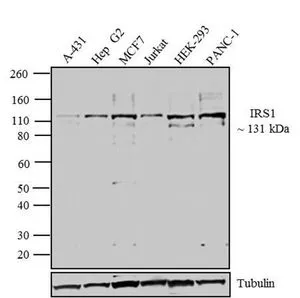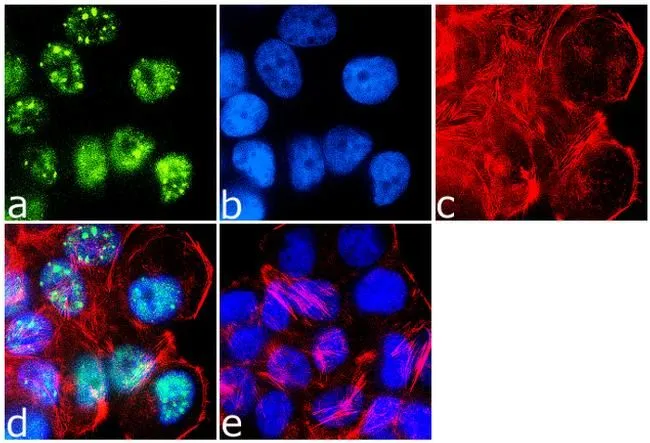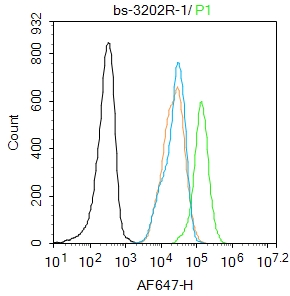
WB analysis of whole cell extracts (30 microg lysate) of A-431 (Lane 1), Hep G2 (Lane 2), MCF7 (Lane 3), Jurkat (lane 4), HEK-293 (lane 5) and Panc-1 (lane 6) using GTX25602 IRS1 antibody. Dilution : 1:250
IRS1 antibody
GTX25602
ApplicationsImmunoFluorescence, Western Blot, ImmunoCytoChemistry
Product group Antibodies
TargetIrs1
Overview
- SupplierGeneTex
- Product NameIRS1 antibody
- Delivery Days Customer9
- Application Supplier NoteWB: 1:250. ICC/IF: 1:250. *Optimal dilutions/concentrations should be determined by the researcher.Not tested in other applications.
- ApplicationsImmunoFluorescence, Western Blot, ImmunoCytoChemistry
- CertificationResearch Use Only
- ClonalityPolyclonal
- ConjugateUnconjugated
- Gene ID16367
- Target nameIrs1
- Target descriptioninsulin receptor substrate 1
- Target synonymsG972R, IRS-1, insulin receptor substrate 1
- HostRabbit
- IsotypeIgG
- Protein IDP35569
- Protein NameInsulin receptor substrate 1
- Scientific DescriptionInsulin receptor substrates (IRS) are responsible for several insulin related activities, such as glucose homeostasis, cell growth, cell transformation, apoptosis and insulin signal transduction. Serine/threonine phosphorylation of IRS-1 has been demonstrated to be a negative regulator of insulin signaling and is responsible for its degradation, although IRS-1 degradation pathways are not well understood. IRS-1 has also been shown to be constitutively activated in cancers such as breast cancer, Wilms tumors, and adrenal cortical carcinomas, thus making IRS-1 phosphorylation and subsequent degradation an attractive therapeutic option. To date there have been four subtypes identified: IRS-1,2,3, and 4, with IRS-1 being widely expressed.
- Storage Instruction-20°C or -80°C,2°C to 8°C
- UNSPSC12352203
References
- Yu SH, Chen SY, Li WS, et al. Hypoglycemic Activity through a Novel Combination of Fruiting Body and Mycelia of Cordyceps militaris in High-Fat Diet-Induced Type 2 Diabetes Mellitus Mice. J Diabetes Res. 2015,2015:723190. doi: 10.1155/2015/723190Read this paper





